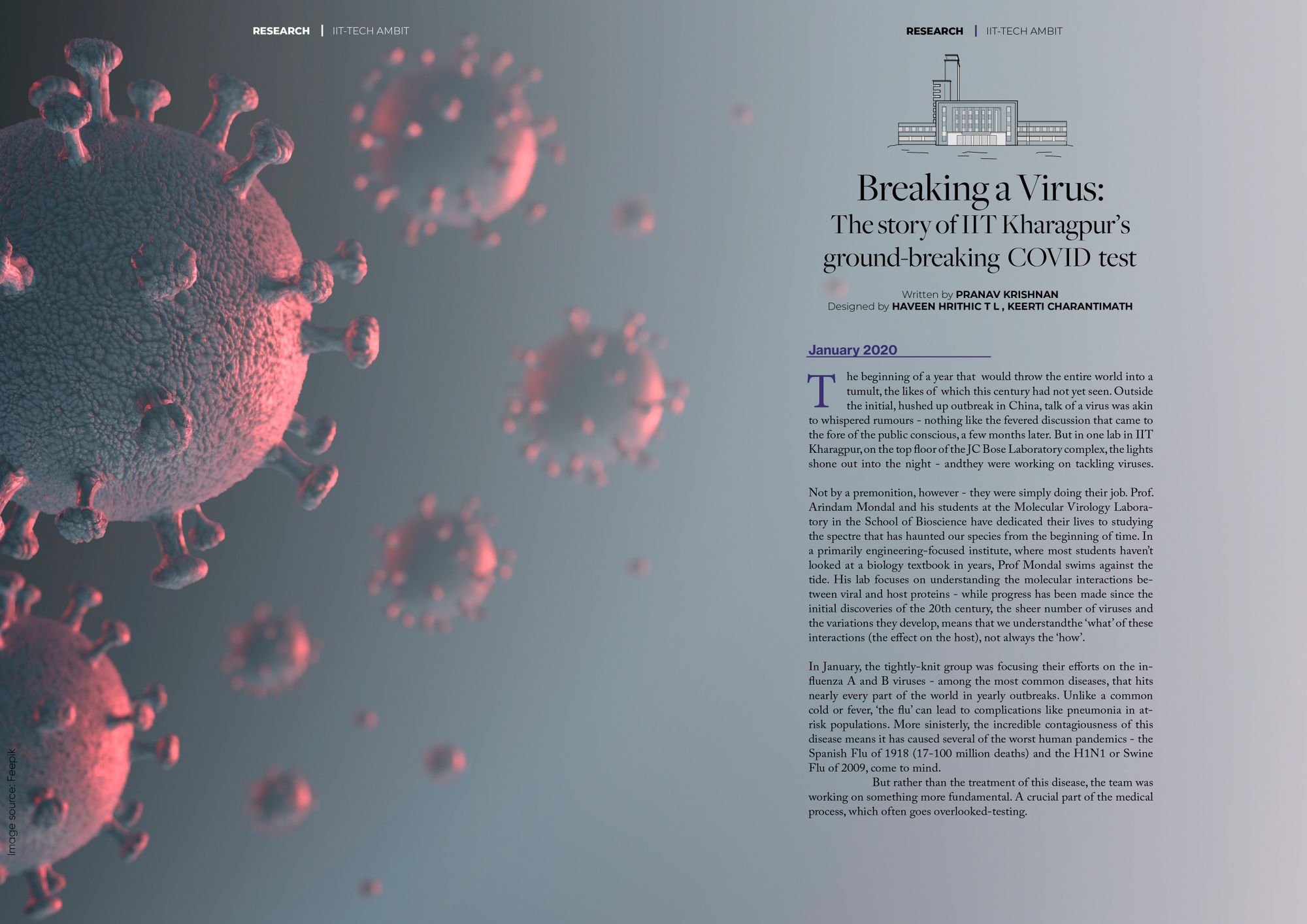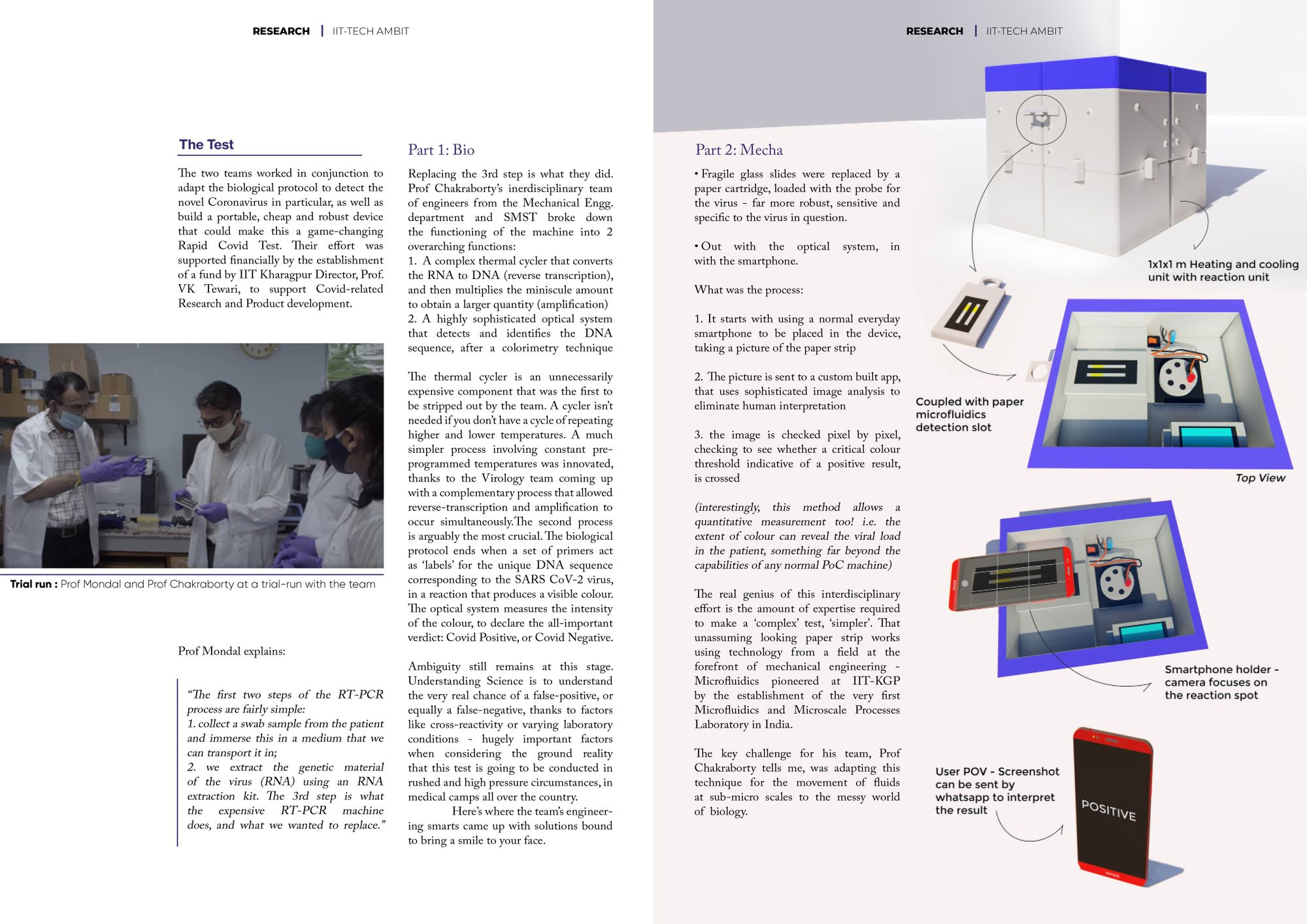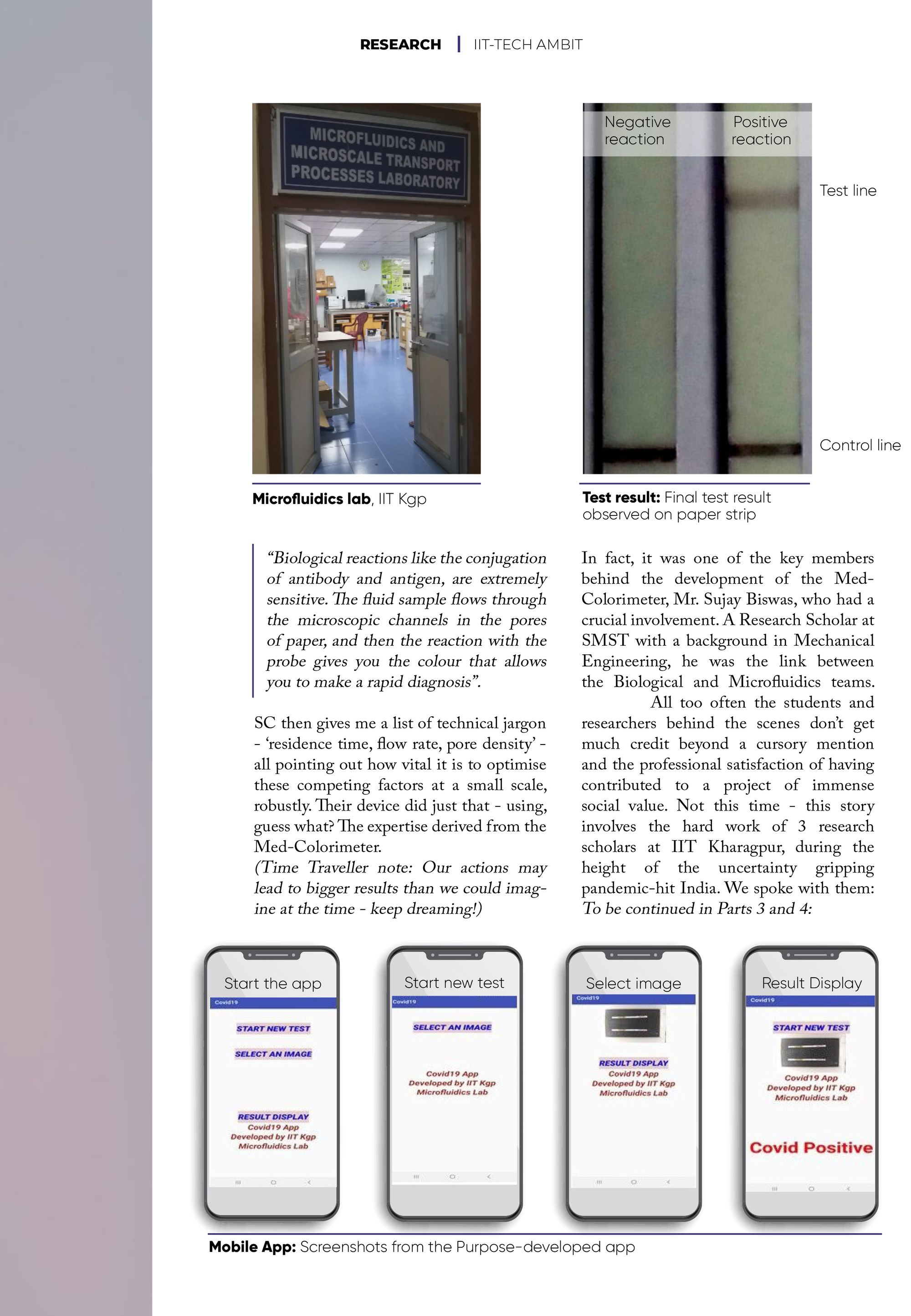1
January 2020.
The beginning of a year that would throw the entire world into a tumult, the likes of which this century had not yet seen. Outside the initial, hushed up outbreak in China, talk of a virus was akin to whispered rumours - nothing like the fevered discussion that came to the fore of the public conscious, a few months later.
But in one lab in IIT Kharagpur, on the top floor of the JC Bose Laboratory complex, the lights shone out into the night - and they were working on tackling viruses.

Not by a premonition, however - they were simply doing their job. Prof. Arindam Mondal and his students at the Molecular Virology Laboratory in the School of Bioscience have dedicated their lives to studying the spectre that has haunted our species from the beginning of time. In a primarily engineering-focused institute, where most students haven't looked at a biology textbook in years, Prof Mondal swims against the tide. His lab focuses on understanding the molecular interactions between viral and host proteins - while progress has been made since the initial discoveries of the 20th century, the sheer number of viruses and the variations they develop, means that we understand the 'what' of these interactions (the effect on the host), not always the 'how'.
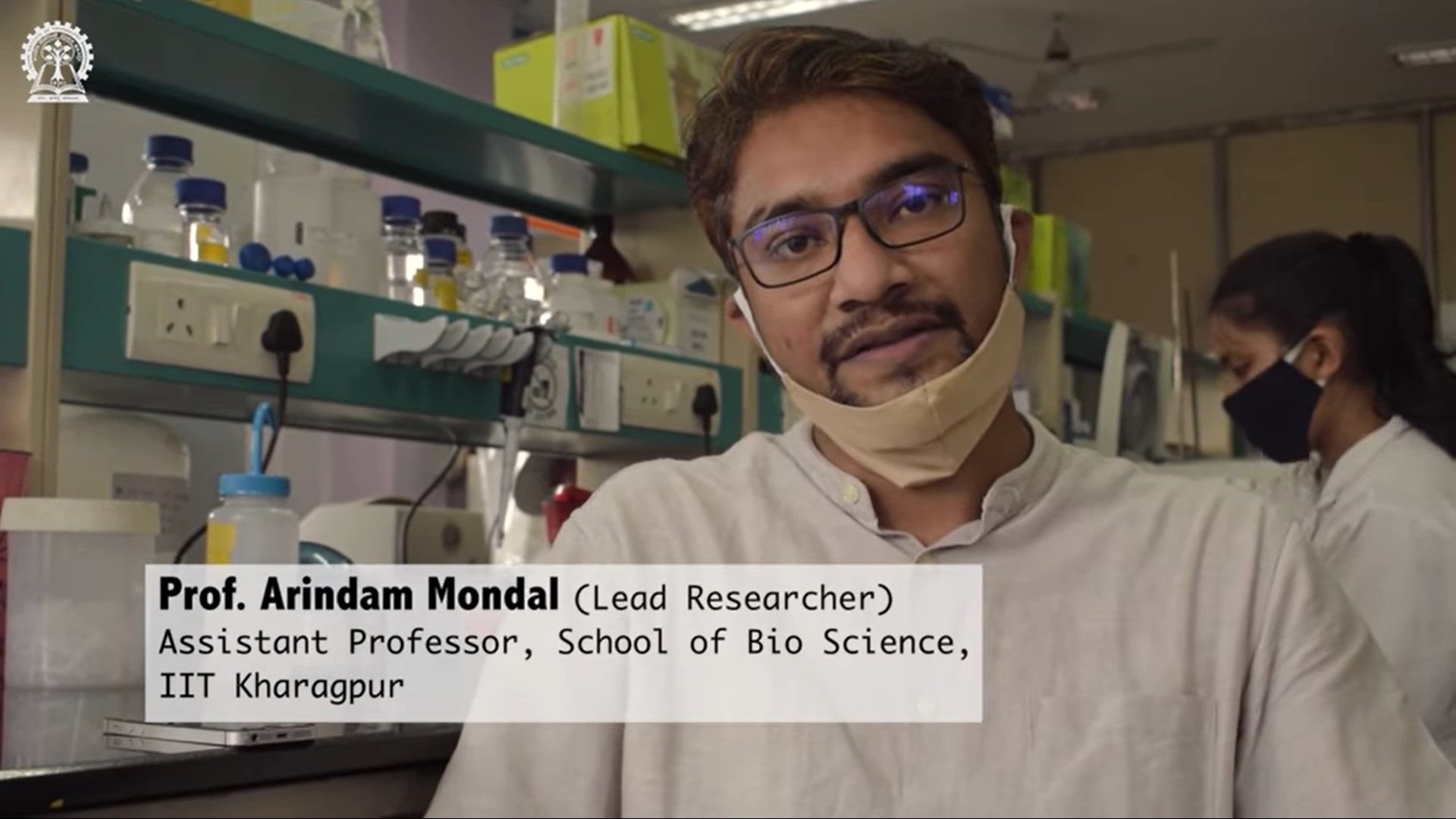
In January, the tightly-knit group was focusing their efforts on the influenza A and B viruses - among the most common diseases, that hits nearly every part of the world in yearly outbreaks. Unlike a common cold or fever, 'the flu' can lead to complications like pneumonia in at-risk populations. More sinisterly, the incredible contagiousness of this disease means it has caused several of the worst human pandemics - the Spanish Flu of 1918 (17-100 million deaths) and the H1N1 or Swine Flu of 2009, come to mind.
But rather than the treatment of this disease, the team was working on something more fundamental. A crucial part of the medical process, which often goes overlooked — testing.
The Need for Better Tests
While treatable, the influenza virus is highly contagious, meaning early detection is crucial to preventing spread. Tests that are quick, simple and low-cost, are called Point-of-care testing (PoC). The reason why PoC tests are crucial in a country like India becomes apparent in a visit to its rural towns and villages. In the country that spearheaded generic drugs, making them cheap and accessible throughout the country, medicines were never the issue — diagnosis is. Most PHCs (Primary Healthcare Centres) lack more than basic tools to test for diseases. For higher quality diagnostics, one must necessarily travel to a semi-urban or urban area, leading to a large delay in effective treatment. Immediate high quality diagnosis in villages would be a complete game-changer, not only in rural India, but in several developing countries that lack a coherent healthcare infrastructure to protect their populations.

A quick look at the current scenario of testing. The quickest and cheapest tests currently available are called Rapid Influenza Diagnostic Tests (RIDTs). These are antigen tests, that detect the molecules in a virus that are capable of stimulating an immune response. However, their accuracy leaves a lot to be desired, as they are not sensitive enough and their reliability depends largely on the conditions under which they are used. The gold standard remains the vaunted RT-PCR test. A mouthful of an abbreviation (Reverse Transcription Polymerase Chain reaction), tests for the genetic material of the virus. This means infection can be predicted with almost complete accuracy, as the root of what the virus is , is identified, rather than the antigens it has or the antibodies produced as a response.
Caveats :- this is a technique that requires sophisticated infrastructure and highly controlled laboratory conditions. A world away from the PoC test that is sorely needed. And so Prof Mondal's team at the Molecular Virology Lab worked on innovating a biological protocol that could simplify the RT-PCR functioning, retaining the accuracy the test granted, but making it more accessible and cheaper.
A friendly time traveller, or just someone with hindsight, could have pointed out the following spoiler alert : Influenza is a RNA virus, that causes respiratory dysfunction — just like a certain SARS CoV-2.
2
March 2020.
Suman Chakraborty is probably one of the most interesting individuals on the IIT Kharagpur campus. Joining the Department of Mechanical Engineering in 2002, he's been renowned since for his research work in the field of Microfluidics. But his zealous devotion to Interdisciplinary and Industry-Academia collaborations have made his involvements stand out - evident in his most recent administrative positions at the institute. Head of SMST, IIT KGP and Dean of SRIC.
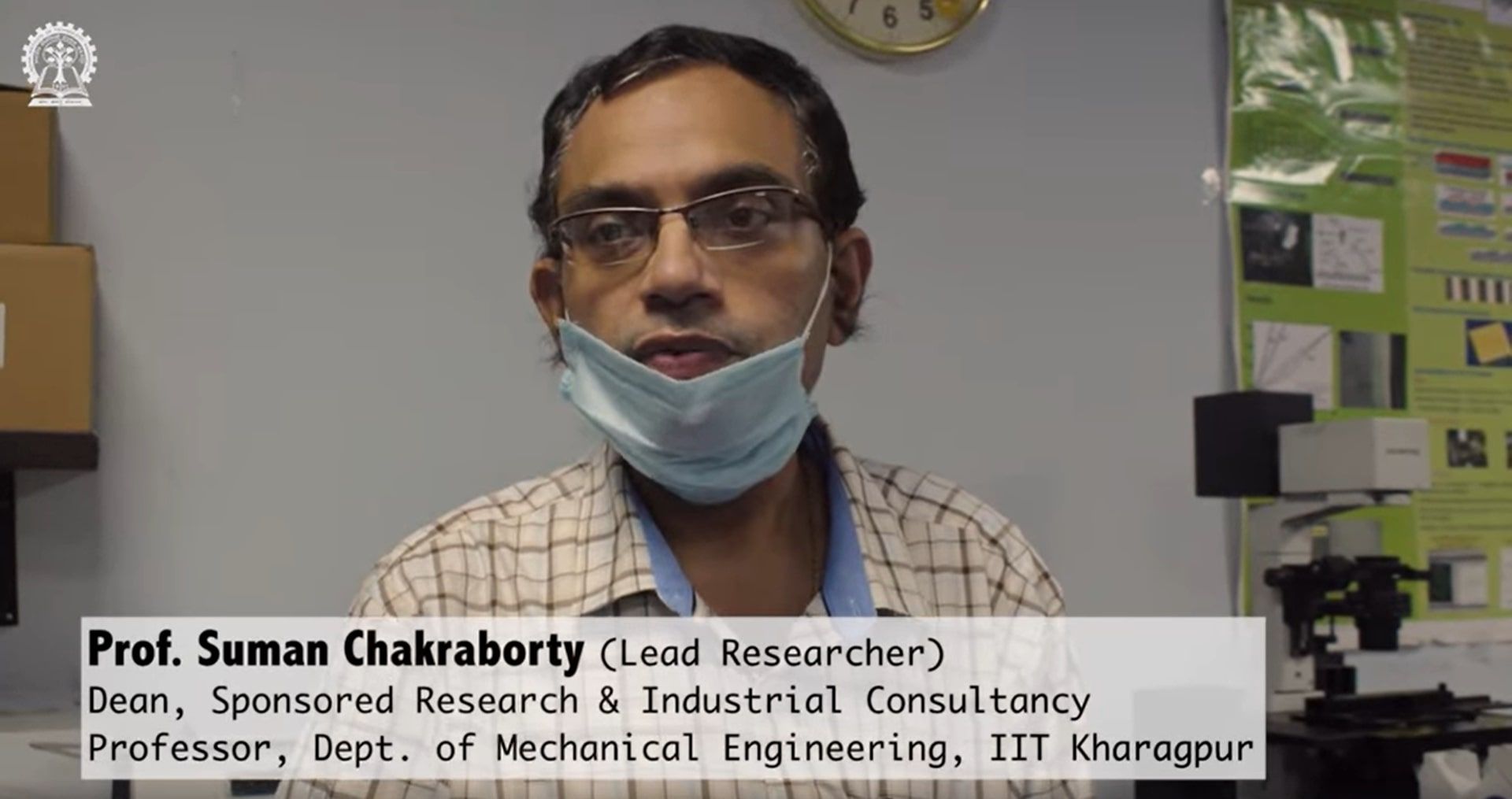
Well before the explosion of innovation in the field of biomedical engineering brought by cheaper and more sophisticated electronics, the School of Medical Science and Technology (SMST) was set up in 2001. Bringing together doctors and engineers to collaborate on improving aspects of healthcare, perhaps the most significant disruption to the field was the work on low-cost medical diagnostic devices. Enter Prof. Chakraborty - he realised that the deep understanding of fluids that his lab had, could have direct applications in molecular biology and biochemistry, where fluids ARE what is being studied.
What followed at SMST was a remarkable slew of patents for innovative diagnostic devices - measurement of Haemoglobin and Glucose levels using just a single drop of blood, and augmented by technology. The sophisticated image processing techniques engineering had been using in industry for years, had trickled down to even basic smartphones, allowing for unprecedentedly low infrastructure costs.
The crown jewel of these efforts, the 'Med-Colorimeter', developed in collaboration with Professor Sudip Nag of the E& ECE Department, became the birth child of a start-up called Focus R&D helmed by Prof Chakraborty and incubated in the Science and Technology Entrepreneurs' Park, IIT Kharagpur. The device used paper based microfluidic technology (Time Traveller note: 'this is a surprise tool that will help us later') to promise a wildly futuristic concept of detecting multiple diseases simultaneously in a single paper cartridge, with only one drop of blood, urine or saliva.

While these innovations with a lot of potential application were great, Prof Chakraborty's frequent consultations with industry giants like General Motors, Shell and ITC made it abundantly clear that research that is not optimised into a marketable product, often does not have the same impact . Enter Sponsored Research and Industrial Consultancy (SRIC), IIT Kharagpur, a body that works on several collaborative research projects and consultations with industries and renowned research institutes. As Dean, Prof. Chakraborty has worked to accelerate collaborations and establish a strong industry link up with the institute.
We were talking about March 2020? That was when Professor Mondal was invited to the Mechanical Engineering Department for a meeting. On how to adapt his team's prized biological protocol into a simplified and accessible device to tackle the world's current biggest threat - the Covid-19 Pandemic.
The Test:
The two teams worked in conjunction to adapt the biological protocol to detect the novel Coronavirus in particular, as well as build a portable, cheap and robust device that could make this a game-changing Rapid Covid Test. Their effort was supported financially by the establishment of a fund by the IIT Kharagpur Director, Prof. VK Tewari, to support Covid-related Research and Product development

Part 1 - Bio
Prof Mondal explains:
"The first two steps of the RT-PCR process are fairly simple: 1) collect a swab sample from the patient and immerse this in a medium that we can transport it in; 2) we extract the genetic material of the virus (RNA) using an RNA extraction kit. The 3rd step is what the expensive RT-PCR machine does, and what we wanted to replace."
And replacing the 3rd step is what they did. Prof Chakraborty's interdisciplinary team of engineers from the Mechanical Engg. department and SMST broke down the functioning of the machine into 2 overarching functions:
- A complex thermal cycler that converts the RNA to DNA (reverse transcription), and then multiplies the miniscule amount to obtain a larger quantity (amplification)
- A highly sophisticated optical system that detects and identifies the DNA sequence, after a colorimetry technique
The thermal cycler is an unnecessarily expensive component that was the first to be stripped out by the team. A cycler isn't needed if you don't have a cycle of repeating higher and lower temperatures. A much simpler process involving constant pre-programmed temperatures was innovated, thanks to the Virology team coming up with a complementary process that allowed reverse-transcription and amplification to occur simultaneously.
The second process is arguably the most crucial. The biological protocol ends when a set of primers act as 'labels' for the unique DNA sequence corresponding to the SARS CoV-2 virus, in a reaction that produces a visible colour. The optical system measures the intensity of the colour, to declare the all-important verdict: Covid Positive, or Covid Negative.

Ambiguity still remains at this stage. Understanding Science is to understand the very real chance of a false-positive, or equally a false-negative, thanks to factors like cross-reactivity or varying laboratory conditions - hugely important factors when considering the ground reality that this test is going to be conducted in rushed and high pressure circumstances, in medical camps all over the country.
Here's where the team's engineering smarts came up with solutions bound to bring a smile to your face.
Part 2 - Mecha
- Fragile glass slides were replaced by a paper cartridge, loaded with the probe for the virus - far more robust, sensitive and specific to the virus in question.
- Out with the optical system, in with the smartphone.
What was the process?
- It starts with using a normal everyday smartphone to be placed in the device, taking a picture of the paper strip
- The picture is sent to a custom built app, that uses sophisticated image analysis to eliminate human interpretation
- the image is checked pixel by pixel, checking to see whether a critical colour threshold indicative of a positive result, is crossed
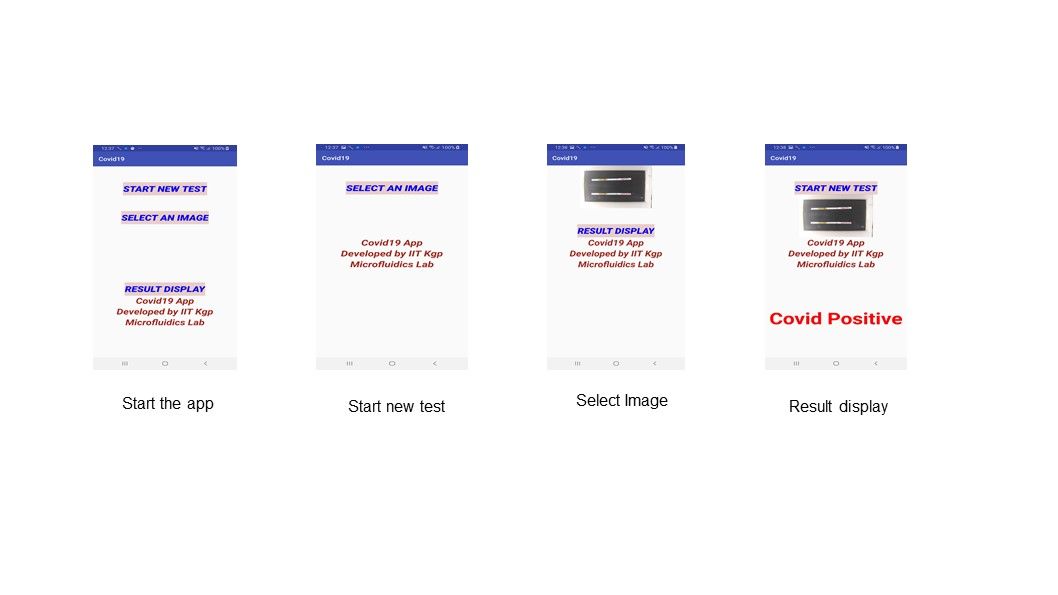
(interestingly, this method allows a quantitative measurement too! i.e. the extent of colour can reveal the viral load in the patient, something far beyond the capabilities of any normal PoC machine)
The real genius of this interdisciplinary effort is the amount of expertise required to make a 'complex' test, 'simpler'. That unassuming looking paper strip works using technology from a field at the forefront of mechanical engineering - Microfluidics, pioneered at IIT KGP by the establishment of the very first Microfluidics and Microscale Processes Laboratory in India.
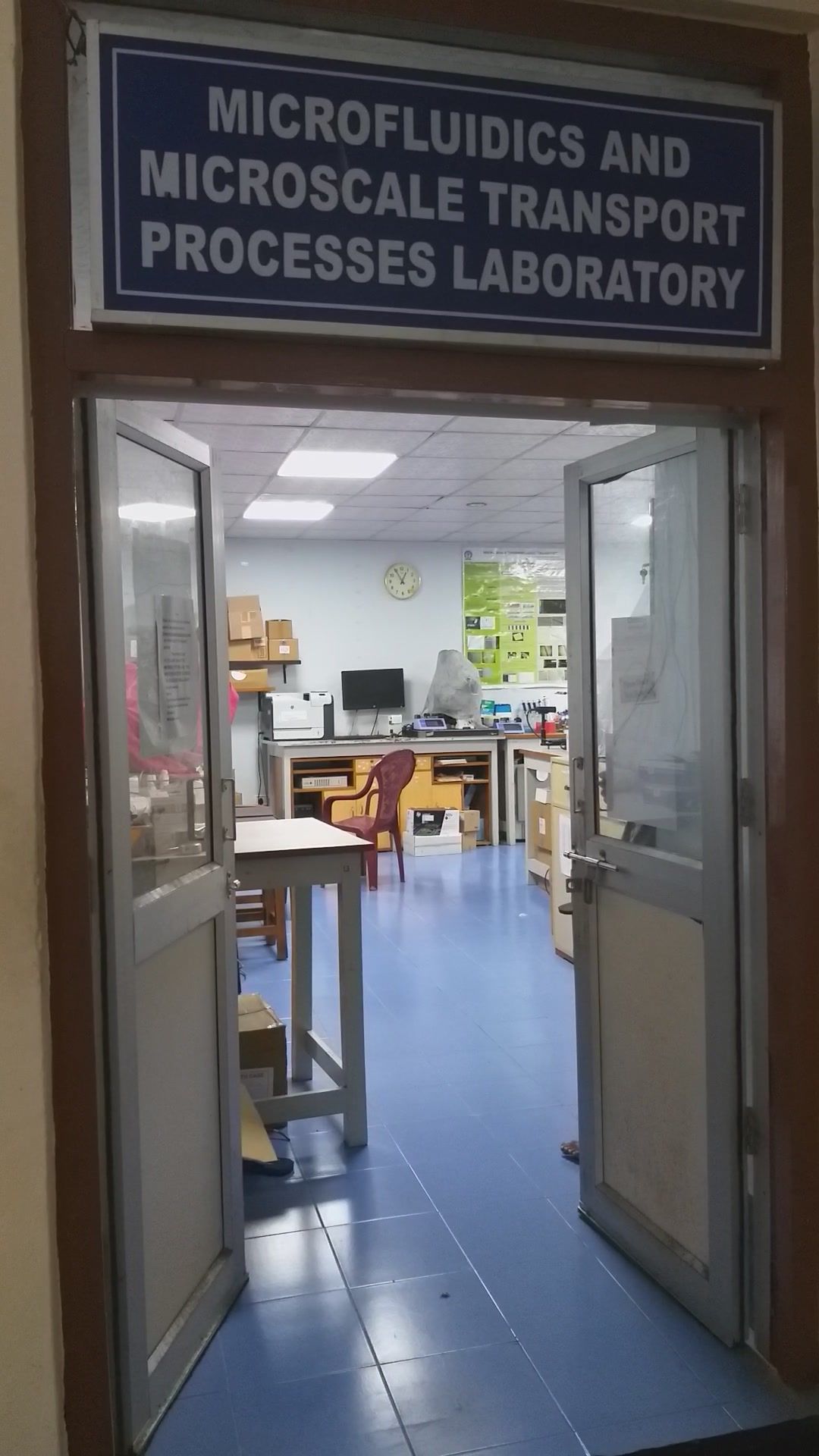
The key challenge for his team, Prof Chakraborty tells me, was adapting this technique for the movement of fluids at sub-micro scales to the messy world of biology.
"Biological reactions like the conjugation of antibody and antigen, are extremely sensitive. The fluid sample flows through the microscopic channels in the pores of paper, and then the reaction with the probe gives you the colour that allows you to make a rapid diagnosis".
SC then gives me a list of technical jargon - 'residence time, flow rate, pore density' - all pointing out how vital it is to optimise these competing factors at a small scale, robustly. Their device did just that - using, guess what? The expertise derived from the Med-Colorimeter. (Time Traveller note: Our actions may lead to bigger results than we could imagine at the time - keep dreaming!)
In fact, it was one of the key members behind the development of the Med-Colorimeter, Mr. Sujay Biswas, who had a crucial involvement. A Research Scholar at SMST with a background in Mechanical Engineering, he was the link between the Biological and Microfluidics teams.
All too often the students and researchers behind the scenes don't get much credit beyond a cursory mention and the professional satisfaction of having contributed to a project of immense social value. Not this time - this story involves the hard work of 3 research scholars at IIT Kharagpur, during the height of the uncertainty gripping pandemic-hit India. We spoke with them:
To be continued in Parts 3 and 4:
